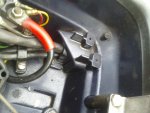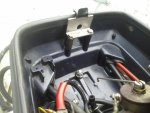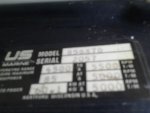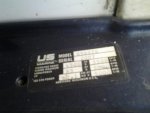Re: 85 force compression
Find your model and serial number first, when you remove your cowl look to the base of the inside lower cowling in front of the carbs and air intake. There you should find a metal plate with the numbers stamped into it.Now use the parts index here at i.boats or marineengine.com to find your engine and get your carb rebuild kits then find yourself a decent manual, factory if possible check ebay. If no luck use the Clymer version over Seloc's.
What I've learned here from the vastly knowledgeable collective is that compression should always be close to even or at least within 5%-10% of one another...
The gauges used and there accuracy can vary widely based on build quality as well so don't fret to much at this point...
My Clymer manual states that compression should be tested with the spark plug wires properly grounded to protect the CD ignition system and with the control in neutral and the throttle fully open(your control either pulls out or you depress the button in order to advance the throttle while in neutral) but I'm sure you know this already.
Being that your carbs are not installed you may not be getting a completely accurate reading but i cannot say for certain as i have not performed this test without them. Someone will be certain to let us know if this can cause false readings.
From what I've been told removing all the spark plugs helps ease the labor of the starter motor, this can only make sense. also try adding a few tablespoons of 2-cycle to each cylinder via the spark plug opening before threading in your gauge.
If your compression increases greatly after adding oil you may have a stuck ring(s) but as you've stated they are all around 122 psi this doesn't sound as though its an issue, as previously stated being "even" is paramount.
Compression readings are most accurately recorded when the powerhead has reached optimal operating temp. As your not yet up and running but will be soon, we will disregard that step as it doesn't currently apply... Get your carbs done and dialed in, maybe rebuild your fuel pump while your at it and replace all lines then check to make sure your ignition system is working as it should. your results will differ after running to correct temp.
You will find that having someone help you with the cranking of the engine ease's this procedure just be aware of the danger zones and communicate loudly to one another to avoid any confusion/misunderstanding.
As for the temp gauge force engines in your year range generally used a buzzer mounted under the dash or in the mercury control box to warn of overheating... there is a thread on testing the system.
For added piece of mind you can always install a tell tale (i.e. the pee stream) for visual proof that the impeller/waterpump is functioning by removing the plug screw from the thermostat housing at the top of the cylinder head and installing a brass barb fitting, some hose and drilling a small hole through the lower cowling. You can search here for great references on how some members did this.
Hey jerryjerry look ^^^^^^^^^ paragraphs

"I have learned so much from you Obi won"























